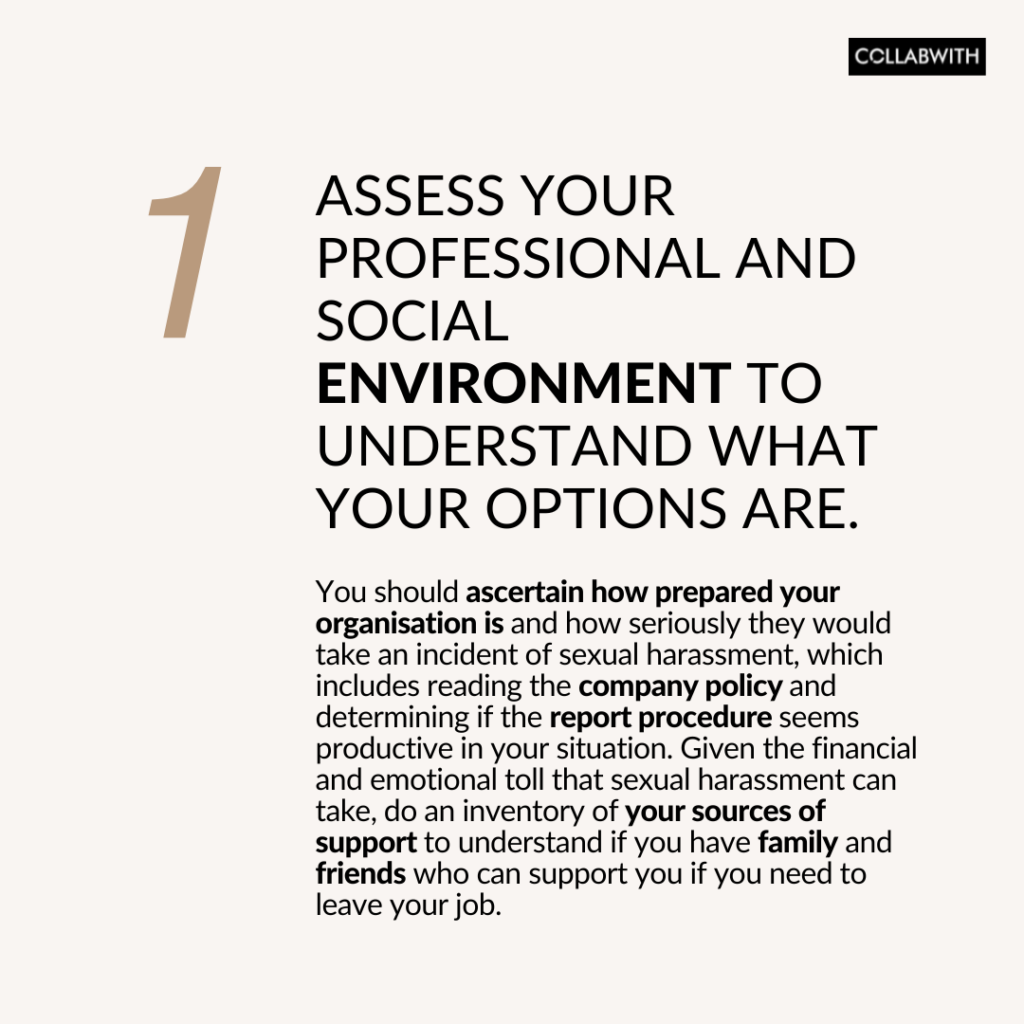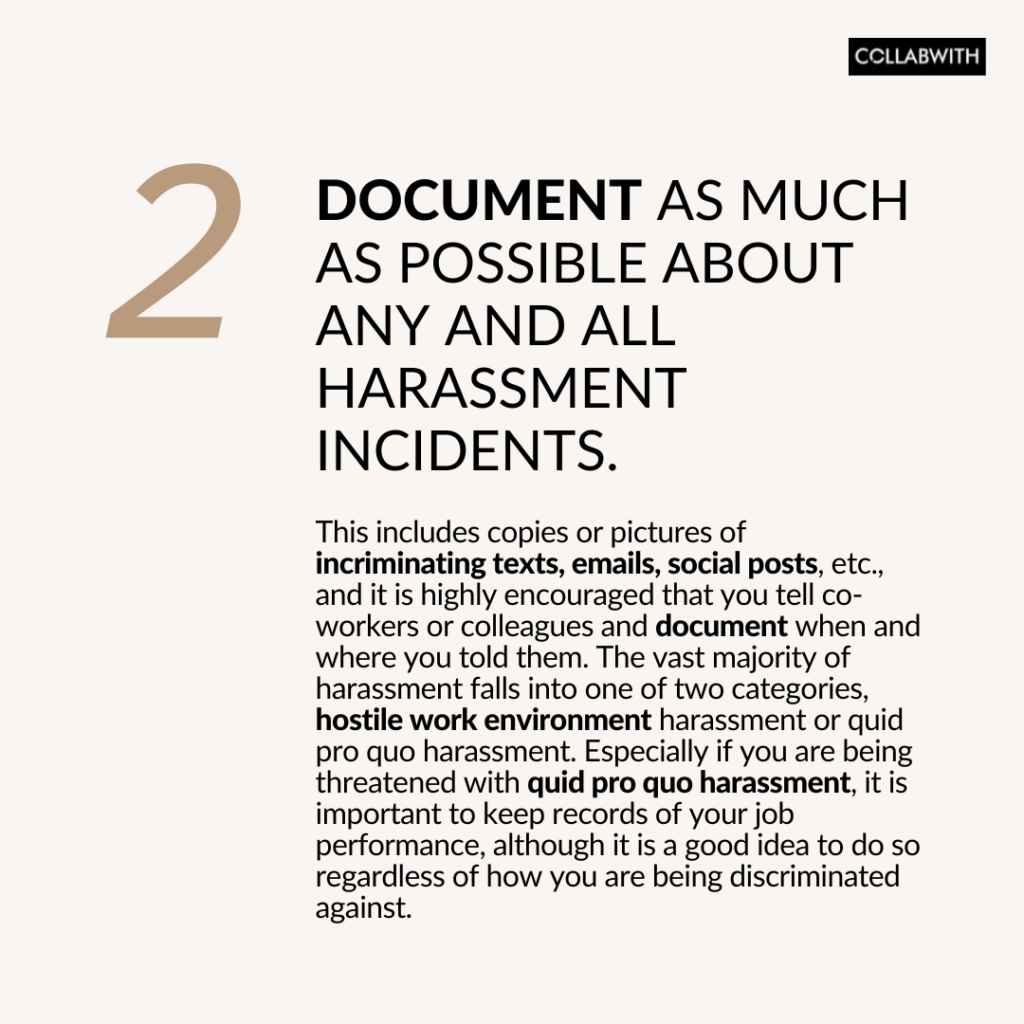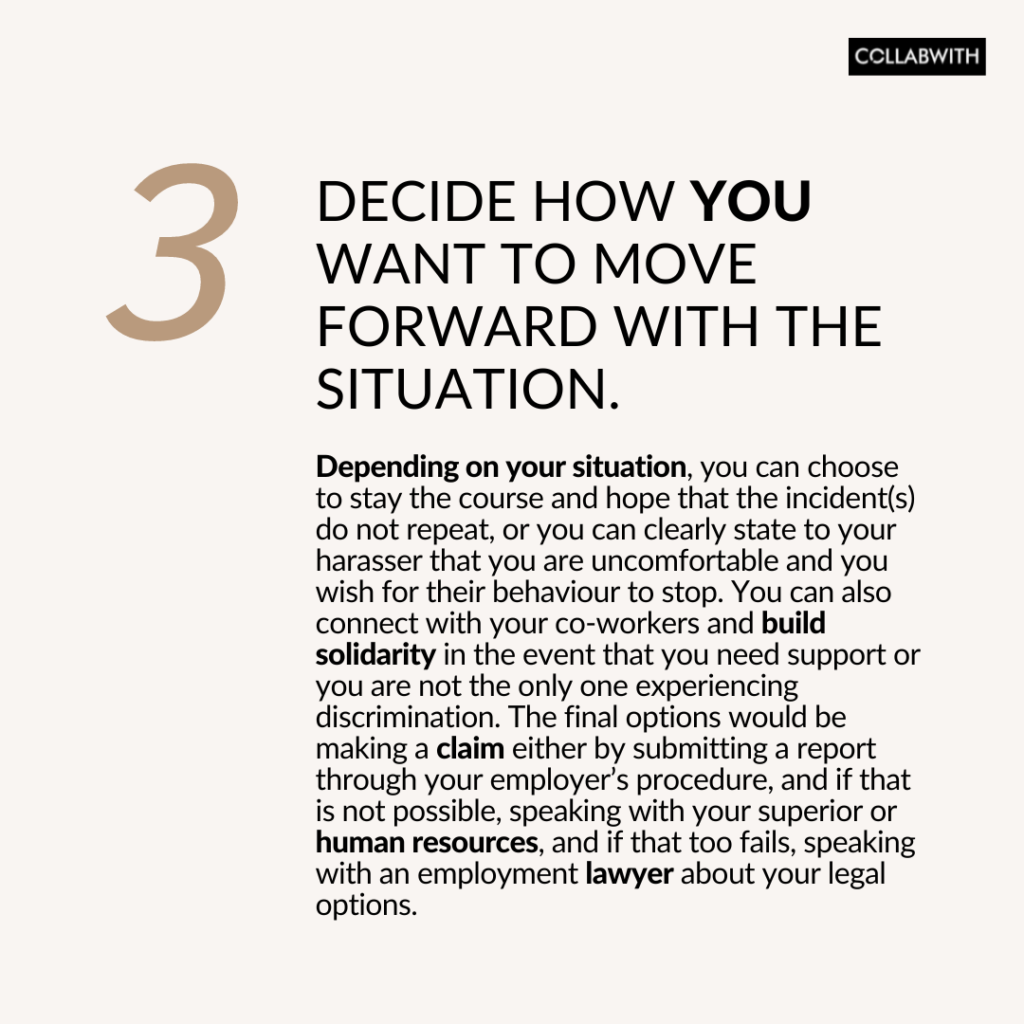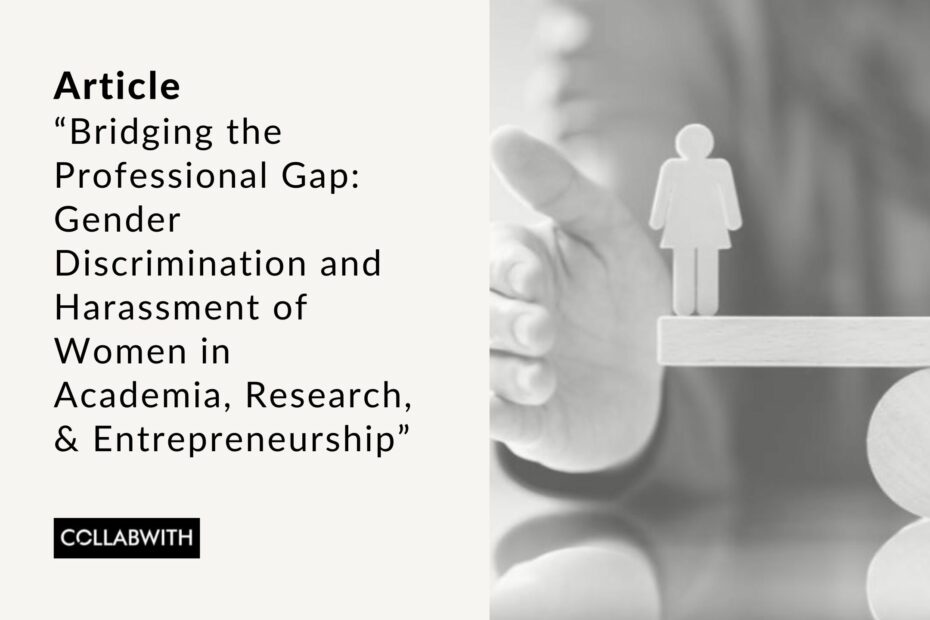Within the realms of academia, research, and entrepreneurship, gender-based discrimination and sexual harassment continue to cast a long shadow, hindering the progress and potential of countless talented women. Female researchers, professors, students, CEOs, and employees face challenges ranging from discriminatory practices to sexual harassment and violence that throughout their professional journeys unequal to any of the common issues experienced by their male counterparts, which ultimately serves to undermine their aspirations and contributions. Two growing demographics in particular, women in academia and women in technology start-ups, are particularly dangerous envrionments as the very hierarchical infrastructure of the institutions place the influx of female participants at a distinct disadvantage. It is crucial that Europe and its neighbors dedicate time and resources to explore the ramifications of gender-based discrimination and sexual harassment in these fields as to better ascertain the best course of action to implement concrete solutions to instances of harassment and to foster an inclusive and equitable environment for all.
Women in Academia & Research
The number of women and girls succeeding in educational contexts from grade school to the doctorate level has been well surpassing their male counterparts for decades in the vast majority of fields except for some specific sciences. The trend of global ‘feminisation’ of higher education institutions has been declared one of the striking features of the sector in the past 50 years, however there is a great discrepancy between the demographics of the number of women in tertiary education populations and the number of women in leadership positions in the same environment. In positions of power and leadership, women only make up around 24% of professorial chairs and 22% of institutional heads across the EU in 2017 (Rosa et al, 2020). The expert group WIRDEM (Women in Research Decision-Making) traced this phenomenon back to three key barriers that essentially work to keep academic direction a ‘Boys Only Club’: Nomination procedures, cultural barriers, and funding limitations.
Beyond the diminutive effect that these implicit or even unintentional biases can have on the professional success of these female researchers, this type of culture can allow harmful behaviours to grow and fester unchecked that can damage the physical and mental wellbeing of these women. From a 2022 UniSAFE Survey of over 42,000 staff and students in the European Research Area, it was found that 62% of respondents had experienced gender-based violence in their time at their institution, with 57% experiencing psychological violence and 31% experiencing sexual harassment. That being said, only 13% of all violence survivors ever reported their abuse, due mostly in part to discouraging envrionmental characteristics. Louise Morkey, Director of the Centre for Higher Education and Equity Research at the University of Sussex and Anke Lipinsky, Senior Researcher at the Centre of Excellence Women and Science at GESIS emphasize that such violence are not localised but globalised, which means harmful environments are both created by and fuel actual and symbolic violence, thereinby creating hostile environments for women. When these behaviours are repeated without address they are repeated and perpetrated across a wider academic context, which naturalises the commonly gendered and hierarchical power relationships between senior academics and students or young researchers into a sexual contract (Bondestam, et. al, 2020).
Barriers to Female Entrepreneurs
One dynamic touched upon previously between women academics and their male-dominated institutions is the fight for proper funding of projects. This imbalance is one of the core issues for female CEOs and small business founders who are seeking investment and funding support as a part of their entrepreneurship journeys. The world of entrepreneurship has witnessed remarkable growth and innovation driven by visionary individuals, however female entrepreneurs often find themselves confronted with a formidable obstacle—the power imbalance inherent in male-dominated venture capital and investment funds. Despite the rising prominence of women in the business landscape, accessing financial support remains a challenge that disproportionately hurts female-run businesses– regardless of location. For example, across the United States, women own 39% of privately held businesses, whereas less than 3% of all American venture capital funding is devoted to ventures led by women. Professor Dana Kanze from the London Business School and her research team found that a key cause of this disparity in fund allocation lies in investor perception of female competence in a given field. In industries dominated by a male workforce, male-led startups raise more than 10 times as much in investment as female-led startups, however this inequality shrinks when start-ups compete in female-dominated industries. Thisis because, according to surveys and interviews, investors perceived female CEOs to be ‘significantly less of a fit’ in male-dominated fields. Kanze argues that this forces female entrepreneurs into a double-trap, where women are only likely to be successful when targeting female-dominated industries, which are themselves a limited portion of the international labour market and smaller earners in the global economy (Kanze et. al, 2020).
Like their academic counterparts, female entrepreneurs are also subject to intolerable amounts of sexually-motivated violence. In their 2020 survey, Women Who Tech found that 44% of their female founder respondants reported experiencing some form of harassment, 65% of which mentioned that they were propositioned for sex when seeking partnerships and investment, and these sexual propositions typically included promises of funding and networking. These numbers have an average increase of 9% from their previous 2017 Women Who Tech survey (Women Who Tech, 2020). These numbers can of course fluctuate depending on location, however it seems as abusive cultures get worse in major investment hubs; Amongst Silicon Valley startup employees, 60% of women experienced unwanted sexual advances (Levin, 2017). These numbers can be attributed in part to the unqeual playing field that places women entrepreneurs at the mercy of investors, and who have to choose between seeking resolution for mistreatment and funding their business. Within male-led startups, this can also be caused by leadership teams that overlook properly developing and implementing Human Resource departments to focus on jump-starting their business and gaining quick profits. It is crucial that the sector begin by examining the far-reaching consequences of these power imbalances and neglect, as to foster awareness and identify strategies to promote inclusivity, diversity, and equal opportunities within the entrepreneurial ecosystem.
Addressing the Problem as an Institution & as an Individual
Within academic and entrepreneurial infrastructures, there are several basic shared understandings that need to be established so that reliable systems of accountability and prevention can be built upon a strong foundation. One such understanding, identified by Professor Susanne Täuber and her team, is the mutually reinforcing dynamic between harassment and basic inequalities, and that a failure to adequately address harassment contributes to long-term professional (and thus lifestyle) inequalities. She also elaborates that this intersectional nature of these issues necessitates top priority status for universities, policymakers, and funds to establish a diverse ecosystem of solutions to re-instill integrity and trust in the entity (Tauber et. al, 2022). To achieve this, Anke Lipinsky makes a similar argument and recommendeds the creation of two parallel structures; The first to serve as an informal procedure that connects trained individuals to people experiencing harassment so that they can provide informal advice and consultation. This system then needs to be accompanied by an official prevention and accountability procedure. This system includes involving relevant actors (e.g. hospitals, academic organisations) in training and policy discourse (Bondestam, et. al, 2020). This sort of system is a great way to implement real change in the heart of research and entrepreneurial spaces to make sure that women feel safe and those experiencing violence can pursue remedies.




That being said, it is unlikely that we will ever fully reckon with the scale and pervasiveness of gender-based discrimination and prevent all forms of sexual violence in working environments, and for many it will remain an unfortunate reality. That being said, it is essential to empower individuals with knowledge and strategies to navigate such challenging situations and ensure their well-being in the event of such behaviour. Based on expertise from human resources professionals, here is a list of recommendations to guide individuals who find themselves facing gender-based discrimination. These recommendations aim to provide practical and actionable steps for handling these distressing incidents, protecting one’s rights, and seeking the support needed to address the situation effectively (Cooper, 2019).
- Assess your professional and social environment to understand what your options are. You should ascertain how prepared your organisation is and how seriously they would take an incident of sexual harassment, which includes reading the company policy and determining if the report procedure seems productive in your situation (which can vary if, for example, your harasser is capable of reading your report). If you are under any sort of confidentiality or N.D.A. agreement you should be aware of how that might impact a report. Given the financial and emotional toll that sexual harassment can take, do an inventory of your sources of support to understand if you have family and friends who can support you if you need to leave your job.
- It is absolutely critical to document as much as possible about any and all harassment incidents including the date, time, location, what happened or was said, and anyone that might have been a witness or involved. This includes copies or pictures of incriminating texts, emails, social posts, etc., and it is highly encouraged that you tell co-workers or colleagues and document when and where you told them. The vast majority of harassment falls into one of two categories, hostile work environment harassment (“unwanted behavior that is severe or pervasive and disrupts or interferes with your work” such as unconsentual touching, sharing explicit content, or sending suggestive emails or texts), or quid pro quo harassment (“when some aspect of your employment is contingent upon fulfilling a sexual request”). Especially if you are being threatened with quid pro quo harassment, it is important to keep records of your job performance, although it is a good idea to do so regardless of how you are being discriminated against.
- The final step is deciding how you want to move forward with the situation. Depending on your situation, you can choose to stay the course and hope that the incident(s) do not repeat, or you can clearly state to your harasser that you are uncomfortable and you wish for their behaviour to stop. You can also connect with your co-workers and build solidarity in the event that you need support or you are not the only one experiencing discrimination. The final options would be making a claim either by submitting a report through your employer’s procedure, and if that is not possible, speaking with your superior or human resources, and if that too fails, speaking with an employment lawyer about your legal options.
In the face of discrimination and sexual harassment, it is imperative that we remain steadfast in our fight for equality, justice, and the dismantling of oppressive systems. By confronting these issues head-on, we can create a future where all professionals, regardless of gender, can thrive and contribute without fear or prejudice. To achieve this, institutions must prioritize building legitimacy and trust by actively addressing and preventing incidents of discrimination and harassment. Clear and robust policies, coupled with effective reporting mechanisms, are vital in ensuring the safety and well-being of female professionals. Moreover, fostering a culture that values diversity and inclusion, where everyone is treated with respect and dignity, is essential for establishing an environment conducive to innovation and growth. As we work towards a future free from gender-based discrimination and harassment, let us remember that collective action, education, and ongoing advocacy are key to creating lasting change and empowering female professionals to reach their full potential. Together, we can build a world where legitimacy, trust, and equal opportunities are the cornerstones of our institutions.
References
Cooper, M. (2019). “What to Do If You’re Being Sexually Harassed”, New York Times, https://www.nytimes.com/guides/working-womans-handbook/what-to-do-if-youre-being-sexually-harrassed
Bondestam, Fredrik., & Lundqvist, Maja. (2020). Sexual harassment in higher education–a systematic review. European Journal of Higher Education, 10(4), 397-419.
Rosa, Rodrigo & Drew, Eileen & Canavan, Siobhán. (2020). An Overview of Gender Inequality in EU Universities. 10.4324/9781003001348-1.
WIRDEM (2008). “Mapping the maze: Getting more women to the top in research”, European Commission, Brussels. Available at: http://ec.europa.eu/research/science-society/document_ library/pdf_06/mapping-the-maze-getting-more-women-to-the-top-in-research_en.pdf
Tauber, S., Loyens K., Oertelt-Prigione S., Kubbe I. (3 June 2022). Harassment as a consequence and cause of inequality in academia: A narrative review. eClinicalMedicine, Vol. 49, 101486, DOI:https://doi.org/10.1016/j.eclinm.2022.101486.
Kanze, D., Conley, M.A., Okimoto, T.G., Phillips, D.J., and Merluzzi, J. (2020). Evidence that investors penalize female founders for lack of industry fit. Science Advances, 6(48), eabd7664. Available at: https://doi.org/10.1126/sciadv.abd7664
Women Who Tech & Lincoln Park Strategies (2020). The State of Women in Tech and Startups – 2020 Survey, https://womenwhotech.org/data-and-resources/state-women-tech-and-startups.
Levin, S. (1 March 2017). “Startup workers see sexual harassment on ‘breathtaking’ scale in Silicon Valley”, The Guardian, https://www.theguardian.com/world/2017/mar/01/silicon-valley-sexual-harassment-startups.
